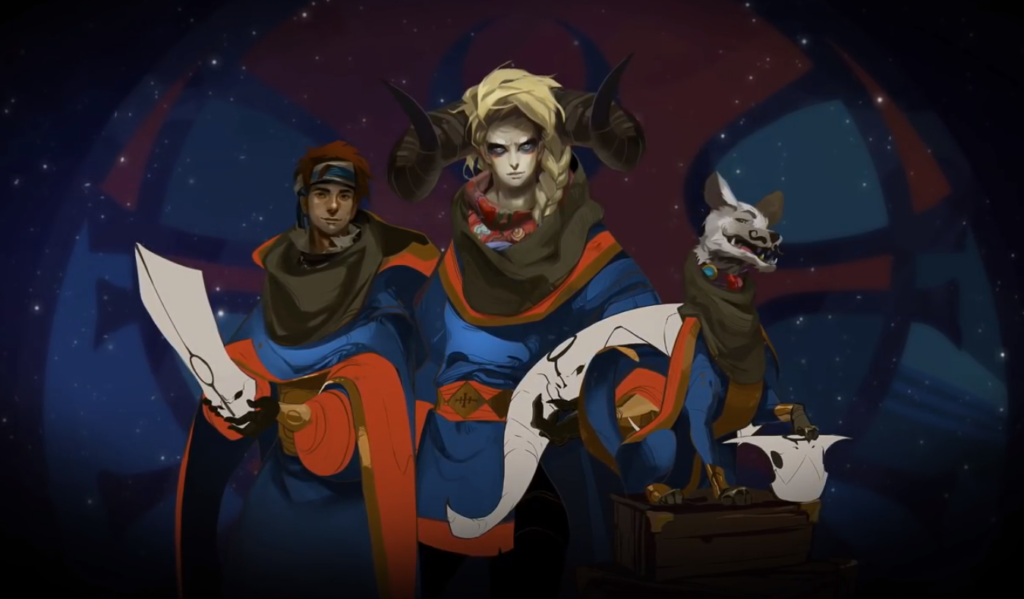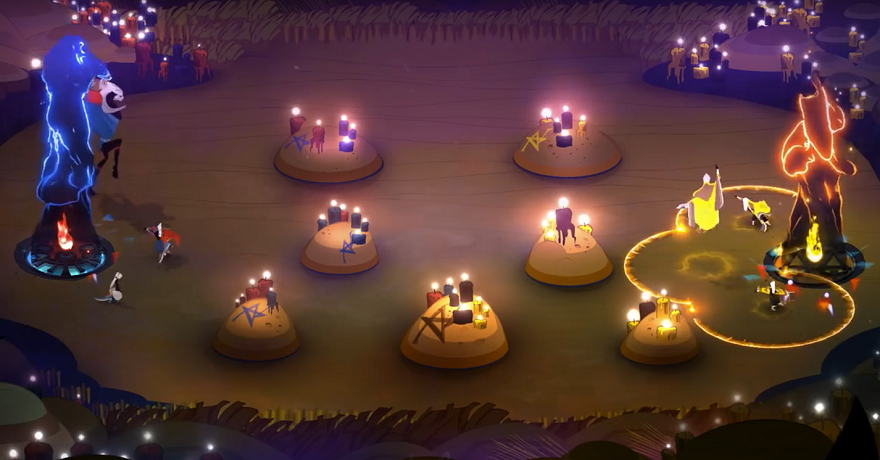How Pyre is different from Transistor and Bastion
As a follow up to Bastion and Transistor, Supergiant Games is taking a bit of a different approach with Pyre. While just as beautifully stylish as the developer’s other games, Pyre is very much its own beast.First off, there is no main character for the player to inhabit. The player instead interacts with the game’s three companions directly. Searching for a way to escape from exile, your team goes on a road trip, engaging in ritualistic rites, essentially three-on-three matches of a type of sports game. Losing a match doesn’t mean death and a reloaded checkpoint though, it means your team lost and now each companion has to deal with that loss in their own way.

As a follow up to Bastion and Transistor, Supergiant Games is taking a bit of a different approach with Pyre. While just as beautifully stylish as the developer’s other games, Pyre is very much its own beast.
First off, there is no main character for the player to inhabit. The player instead interacts with the game’s three companions directly. Searching for a way to escape from exile, your team goes on a road trip, engaging in ritualistic rites, essentially three-on-three matches of a type of sports game. Losing a match doesn’t mean death and a reloaded checkpoint though, it means your team lost and now each companion has to deal with that loss in their own way.
More than that however, how you preform in matches and the decisions you make throughout your journey, including how you interact with each of the companions, will either raise or lower their Hope, leading them to either perform better or worse in the next rite.

Speaking with Polygon, Supergiant Games Creative Director Greg Kasvin explains, “We want people to make decisions in a personal way around the characters. Questions come up, and you can interact in different ways… Interactions with certain characters can affect their moods and affect the way they play in the rite.”
These dodgeball-like matches, which involve throwing and dogdging auras between the two teams, are the focus of the game. “You have to coordinate between multiple characters,” Kasavin continues. “You’re very naturally moving between offensive and defensive play. It has a mix of play that is very active, but has a tactical feel to it as well.”
Looking to avoid the more classical ‘losing means death’ set up, found even in Supergiant’s previous games, Kasavin says, “We like the idea of a high stakes competition where it isn’t just about life and death, that’s a very common thing in video games. You just try and try and try until you win. Death isn’t usually much of a setback… We like the idea of a game in which you could suffer setbacks, and your characters have to deal with it. If they’re defeated, they return to their hangout to talk about it and lick their wounds.”
As for the lack of a specific protagonist, Kasavin says, “This time, we wanted the player to feel as much as possible like your in this world, interacting directly with these characters. You are not one of the ones on the screen and they talk to you directly. It’s a second-person mode of storytelling… We wanted a larger cast of characters that you could get close to this time.”
Pyre is due out sometime next year. To see more, check out the reveal trailer. What do you think of it so far? Let us know in the comments.
